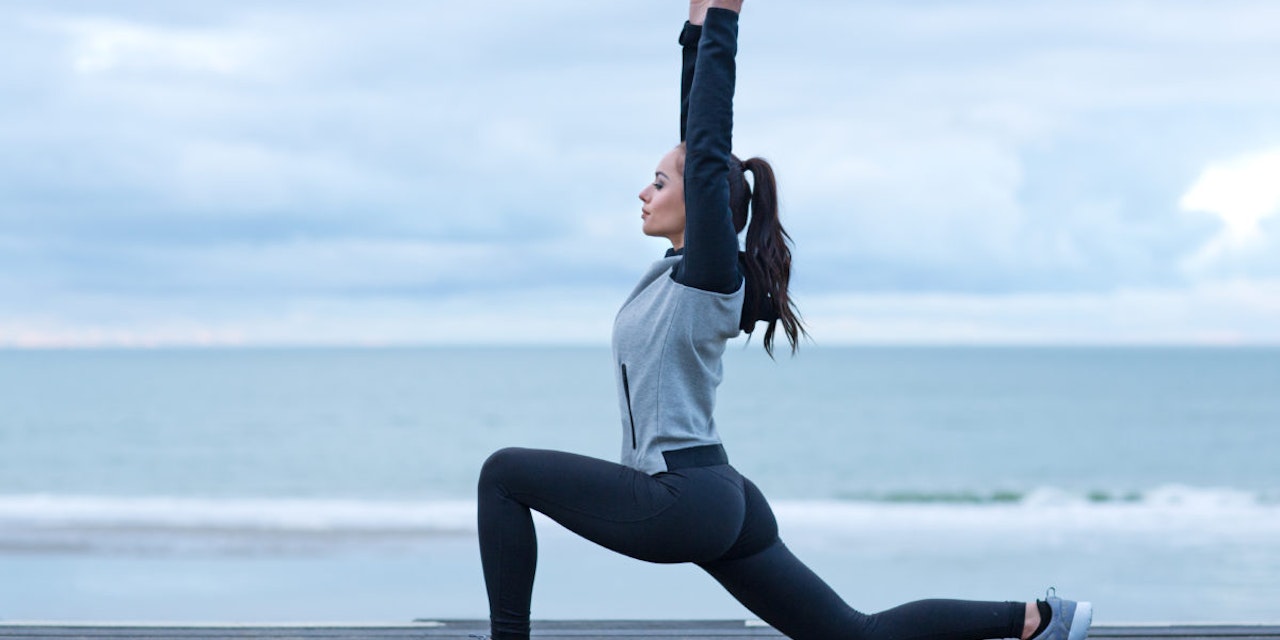
It starts small: You notice your back hurts when you plank, that your knees are sore after a squatting session, or that your shoulder blade is popping out at an angle.
Injury can happen to all of us, but gym newbies are especially susceptible.
Here’s our advice on how to avoid injury when working out:
Focus on your form first
It can be tempting, more so if you’re familiar with the gym, to simply try and do each exercise as fast as you can or with as many reps as you can. While speed is good, slightly slower movements with the right form are better.
Any CrossFit trainer or personal trainer will start you off without any weights, telling you how best to position yourself, how close or far apart your feet should be, where to place your hands, how to bend without damaging your knees and so on. Take time to listen to them, or if you’re unsure, ask for one or two sessions with a trainer who can walk you through correct form.
If you’re working out from home – there are tons of videos online that will tell you what you should and shouldn’t be doing in certain exercises.
Make time to stretch and warm up
I’ll be honest: stretching is the thing I neglect to do the most. I always feel like the pre-workout and post-workout sessions are a waste of time but they aren’t.
Don’t be like me. It’s actually beneficial for you to stretch before working out as it helps get rid of tightness in the muscles and gets blood circulating to all your joints – it prepares your body for the workout.
The same can be said of the cool down at the end. Stretch it out, release all the tension in your muscles and give them a gentle foam roll, it aids in muscle recovery which makes you less prone to injury in your next workout.
Pick the right gear
It might sound crazy, but something as small as your sneakers being a little too big can lead to injury. Your body naturally compensates for shortcomings, which is why when it’s cold and you aren’t dressed effectively you shiver and your hair stands on end, and it does the same if it’s placed in clothing and footwear that don’t fit well. You can end up pulling muscles or overworking certain parts of your body if your gym wear isn’t in your size – choose wisely!
Grade up
A lot of injury can occur because you’re just taking on more weight jam your body can actually really take. Start with lighter weights (even if the guy or girl smaller than you is lifting one twice the size) and gradually work your way up to heavier ones. Remember that you’re only competing with yourself, and no-one else.
Don’t over do it
While fitness is to an extent about pushing beyond your limits and challenging yourself, you still need to listen to your body. There’s a difference between pushing yourself mentally because you want to give up because something is difficult, and pushing yourself physically when your body is telling you that you need to stop: listen for the difference.
Modify, modify, modify
If you already have injuries or certain problem areas, or even if you’ve just started noticing small issues that come up when you do specific exercises, don’t be afraid to modify. It’s much better to change the way you do an exercise than it is to ‘push through’ and do more damage. Inform your class instructor about your injury and ask for advice, or try working out in front of a mirror to allow you to see where the pain occurs.
Don’t let the possibility of injury put you off of exercise – just embrace it with care!
All of the content and media on Lifesum is created and published for information purposes only. It is not intended to be used as a substitute for medical advice or treatment. Users should always consult with a doctor or other health care professional for medical advice. If you have or think you are at risk of developing an eating disorder, do not use the Lifesum app and seek immediate medical help.